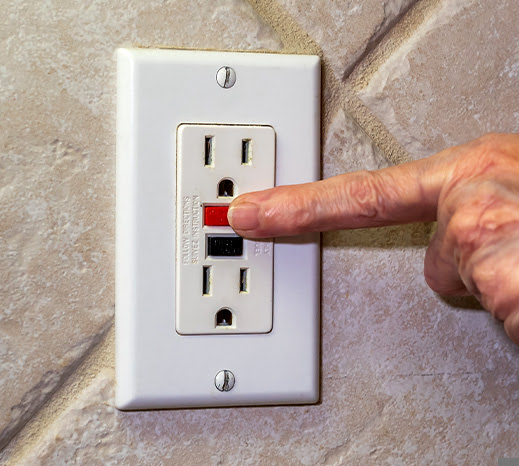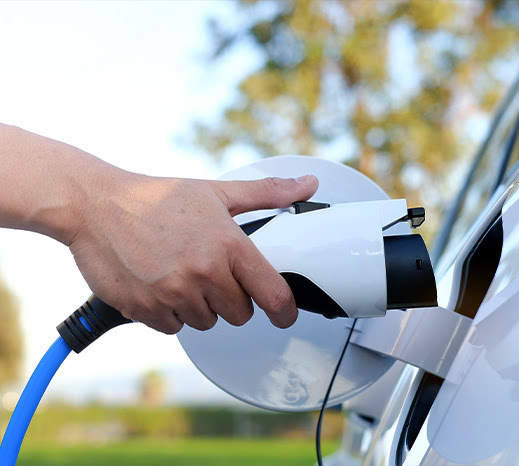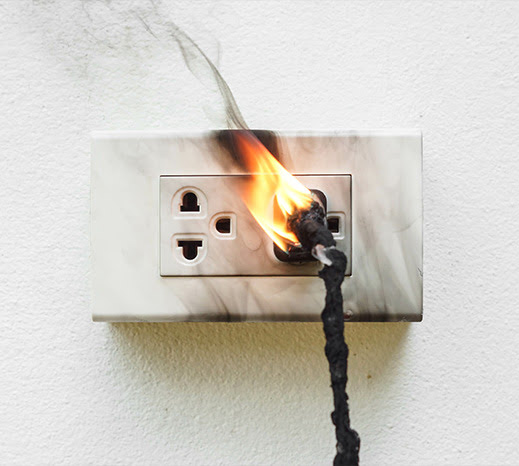You might not be familiar with Ground Fault Circuit Interrupters (GFCIs), but you probably have a few already—and if you don’t, you should. These safety devices are vital for preventing electrical hazards in many parts of your home, so here’s a guide from our team at 4-Star Electric on how they work and where to put them.
We’ve provided electrical safety inspections and services to Calgary for years. Use our knowledge, experience, and professional support to keep your home as safe as it is convenient for you and your family.
What Are GFCIs (& Why Do They Matter)?
Electrical shocks are not only painful but can also be fatal—so a GFCI is a fast-acting circuit breaker designed to shut off electric power in the event of a ground-fault. They can react within as little as 1/40 of a second, and can also play a key role in preventing electrical fires.
How GFCIs Work
GFCIs monitor the balance between the electrical currents flowing into and out of a device via the circuit conductors. When there's an imbalance of approximately 5 milliamperes or more (indicating a potential ground fault), the GFCI swiftly disconnects the power to that circuit. A properly maintained GFCI will trip as soon as a faulty tool is plugged in.
Why GFCIs Are Different from Regular Circuit Breakers
While both GFCIs and traditional circuit breakers are protective devices, their purposes differ. Regular circuit breakers merely protect against overloading and short circuits. On the other hand, GFCIs specifically protect individuals from ground faults, which can cause electrical shocks.
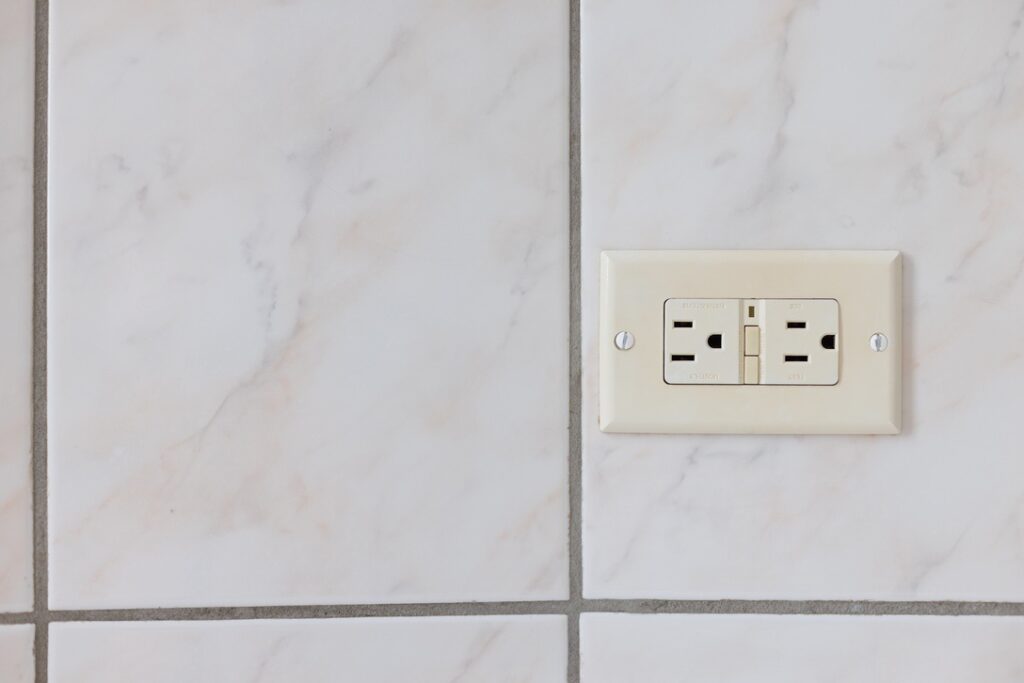
Where to Install GFCIs in Your Home
The Electrical Code in Alberta requires GFCI installations in specific parts of your home where water is likely to be present. These include:
- Bathrooms: Due to the proximity to sinks, toilets, showers, bathtubs, etc.
- Kitchens: Especially near the sink.
- Laundry Rooms: To protect against unexpected water splashes from washing machines or utility sinks.
- Garages: Because of the various electrical tools and equipment, as well as the potential exposure to the elements.
- Outdoor Outlets: Given their exposure to the outdoors and potentially inclement weather (rain, snow, etc.).
Additionally, always be vigilant about areas in your home where electricity and water might intersect. These are typically high-risk areas needing GFCI protection.
GFCI Outlets vs. GFCI Circuit Breakers
GFCIs can be used on both outlets and circuit breakers. Here’s how these two types differ:
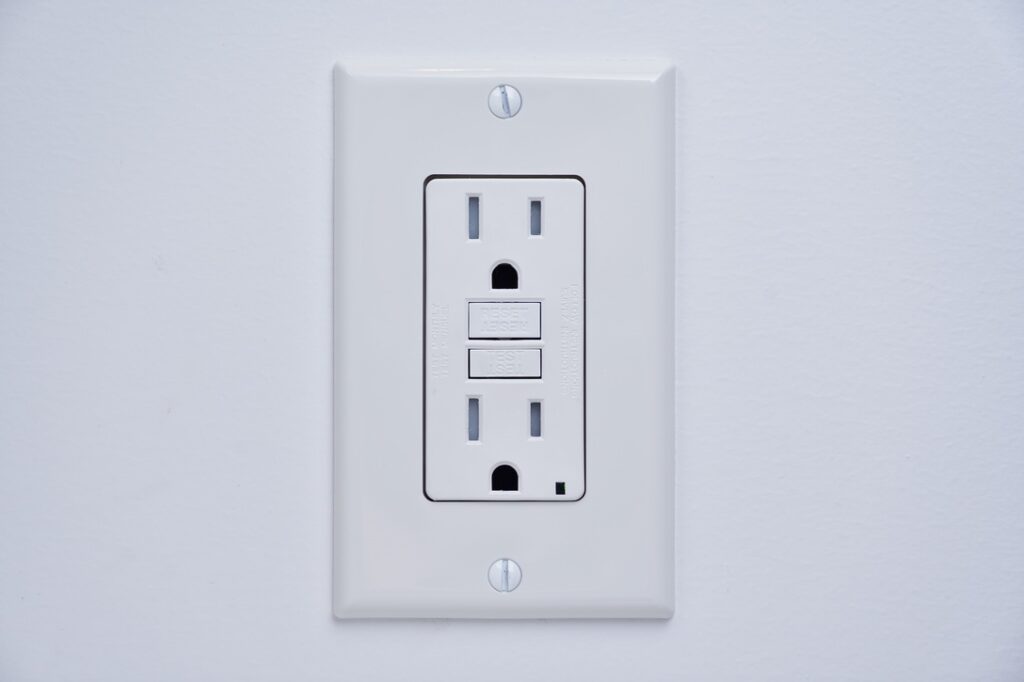
GFCI Outlets
These are individual outlets installed in rooms that might come into contact with water, like bathrooms or kitchens. They have 'Test' and 'Reset' buttons and are ideal for localized protection.
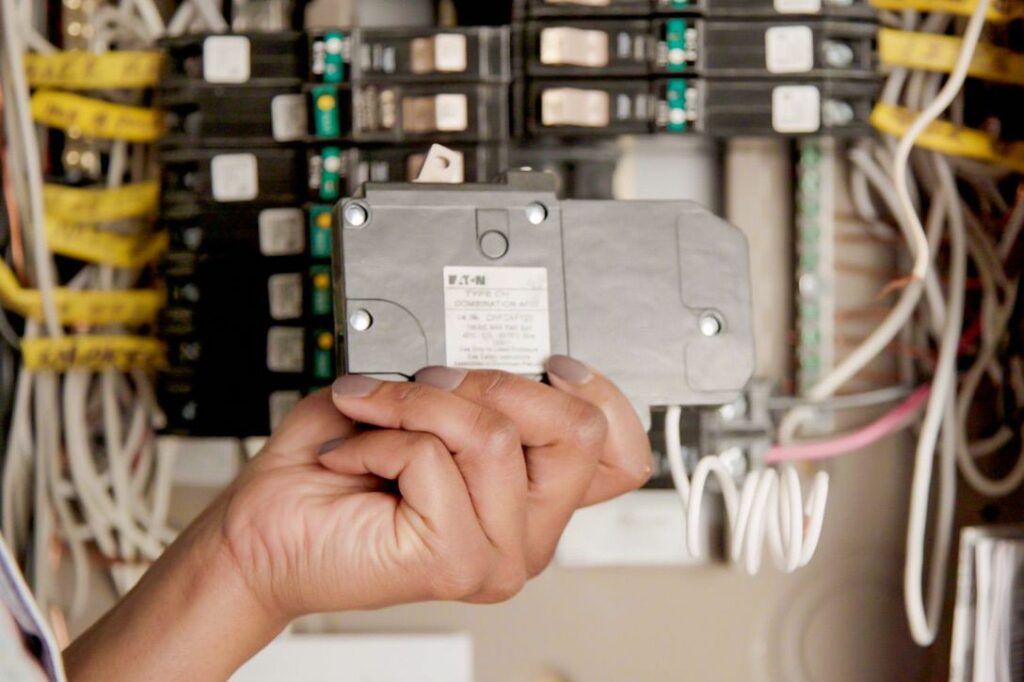
GFCI Circuit Breakers
Instead of protecting a single outlet, these protect the entire circuit. They are installed in the home’s electrical panel and are suitable for broader areas where multiple outlets require protection.
Choosing Between the Two
Your choice largely depends on specific needs and the space in your home. If you're looking to offer protection to individual high-risk outlets, GFCI outlets might be your go-to. However, for comprehensive protection, GFCI circuit breakers would probably be more appropriate.
Testing and Maintaining Your GFCIs
Like any piece of safety equipment, regular checks and maintenance are required to make sure your GFCIs are functioning properly. Here’s what we recommend:
- Regular Testing: Test your GFCIs at least once every month for the best results.
- For GFCI outlets, press the 'Test' button. If the power cuts off, it's working correctly. Press 'Reset' to restore power.
- For GFCI circuit breakers, the process might differ slightly based on the manufacturer's guidelines. Calling our team to test your GFCI circuit breakers during a routine electrical inspection is the best way to ensure their effectiveness.
- Ongoing Maintenance: Dust the outlet and make sure it’s free from obstructions.
Remember: if a GFCI repeatedly trips or fails its tests, it might be time for a replacement. Our team can help you install new GFCI outlets or breakers if you need them.
Hiring a Professional Electrician for GFCI Installation and Maintenance
DIY and electrical safety don’t mix. GFCIs should only ever be installed by qualified electricians like our team, and you should also call us if you’re experiencing any trouble with the way they work. Apart from the simple maintenance tips listed above, dealing with these pieces of sensitive equipment is always a job for our professionals.
At 4-Star Electric we pride ourselves on our thorough knowledge of the Canadian Electrical Code and the best practices for GFCI installation and maintenance. Our trained electricians can ensure that your GFCIs are installed in compliance with all regional safety codes to maximize your family’s safety. Contact us today for help with these vital pieces of safety equipment or any other electrical services your home requires.
Frequently Asked Questions about GFCIs
How often should GFCIs be replaced?
While GFCIs are designed for long-term use, their lifespan can be anywhere from 10 to 15 years. It's essential to test them regularly and consider replacement if they no longer function correctly or after a decade of use.
Can I use a GFCI with major appliances like refrigerators or washing machines?
While GFCIs provide enhanced protection, they can sometimes be sensitive to the startup surges of larger appliances. For major appliances, it might be advisable to use dedicated circuits without GFCI protection to avoid nuisance tripping.
What is the difference between a GFCI and an AFCI (Arc-Fault Circuit Interrupter)?
While both provide protection, they serve different functions. GFCIs protect against ground faults which might cause electrical shocks, while AFCIs guard against arc faults that can result in electrical fires. Some modern circuit breakers combine both features.
Why does my GFCI outlet have a light on it?
Many modern GFCI outlets come with built-in indicator lights. Depending on the model, a light might indicate that the GFCI is active and working, or it might illuminate if there's a trip or malfunction, serving as a quick visual diagnostic tool.
Can I install a GFCI even if my home is old and doesn’t have a grounded wiring system?
Yes, GFCIs can be installed in homes without a grounded wiring system. They will still provide shock protection in the event of a ground fault. However, they won’t provide grounding for your appliances or devices, so it's crucial to label them as "No Equipment Ground."
Do GFCIs also function as surge protectors for my devices?
No, GFCIs are designed to protect people from electrical shocks due to ground faults. They don’t provide surge protection for electronic devices. For that purpose, you'd need a separate surge protector.

